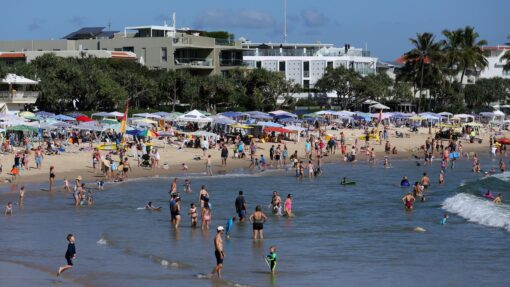RBA primed for rate pause, but more hikes not ruled out
Poppy Johnston |
Interest rates are broadly tipped to stay on hold for a third month in a row in September, but the possibility of more hikes is still alive.
The Reserve Bank board is due to meet on Tuesday afternoon for its monthly cash rate decision.
In August, the central bank opted to keep interest rates paused for the second consecutive month.
The back-to-back months on hold followed four percentage points of increases that have piled pressure on borrowers.
A convincing slowdown in the monthly consumer price index, sinking to 4.9 per cent in July from 5.4 per cent in June, has fuelled much of the optimism for another hold in September.
Signs of softening in the job market and wages tracking sideways have also added to the case for no change.
Judo Bank economist Warren Hogan said inflation was moderating in line with the RBA’s forecasts, giving the board breathing space to sit back and continue monitoring in September.
But he told AAP it was still “way too early to be popping champagne corks”, with the relative heat of the economy his key concern.
While economic growth is slowing, Mr Hogan warned that softness would need to stick around until next year to allow demand to get back into balance with supply, and inflation to return to the two to three per cent target.
He said robust retail sales numbers and strong business investment were indicators of a resilient economy.
“I personally think where we’re probably one rate hike short of the level that they could be comfortable sitting on right through next year,” Mr Hogan said.
Westpac economist Bill Evans was also confident the RBA would hold steady at the September meeting.
He said the central bank had missed its chance to take out more insurance against inflation last month.
“Going forward from here, the evidence around an ongoing weak economy and slowing inflation will encourage the board to extend its pause through to the end of the year and into 2024,” Mr Evans said.
The improving odds of an extended pause appear to be easing consumer nerves, with confidence levels reaching their highest point since April.
The weekly survey from ANZ and Roy Morgan increased a modest 0.6 points to 78.7.
Despite the improvement, the gauge remains well below long-run averages.
While interest rates will dominate the economic agenda this week, Australia will also get its update on economic activity for the June quarter on Wednesday,
Balance-of-payments data, which has implications for the national accounts figures, revealed a shrinking trade surplus in the June quarter as the price of key export commodities dived.
Australia’s current account surplus fell sharply by $4.8 billion to $7.7 billion, according to the Australian Bureau of Statistics, down from the revised March quarter 2023 surplus of $12.5 billion.
The terms of trade fell 7.9 per cent in the June quarter.
The balance on goods and services is expected to contribute 0.8 percentage points to the quarterly GDP movement.
Oxford Economics Australia head of macroeconomic forecasting Sean Langcake said this was a very strong contribution.
“This should ensure GDP growth will be positive in the June quarter, despite the growing headwinds to domestic demand growth,” he said.
The ABS also released public sector finance data, another input into GDP.
The general government net operating balance rose $25.8 billion to $32.5 billion, with total public demand expected to contribute 0.5 percentage points to the quarterly change in GDP.
AAP


